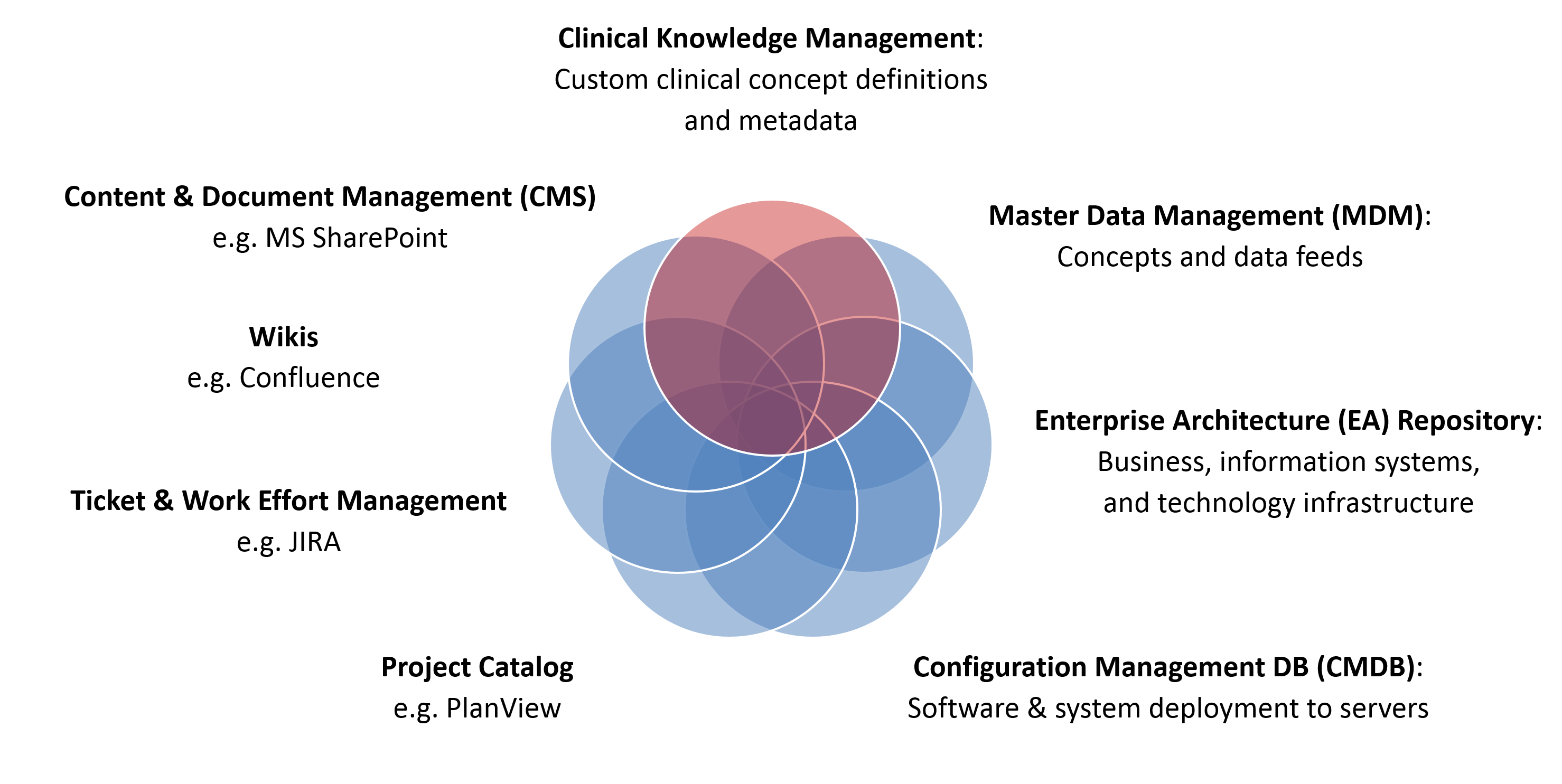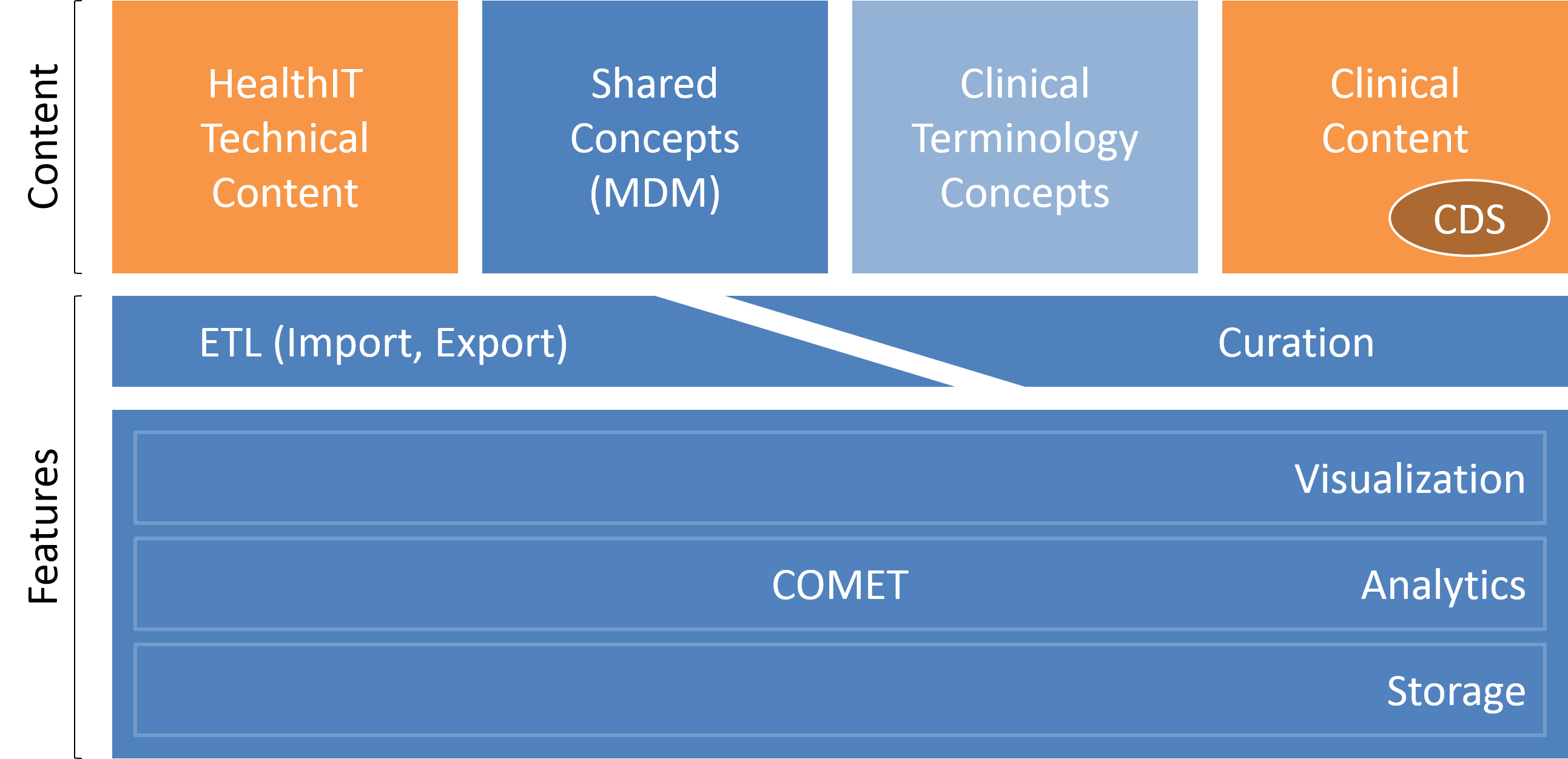COMET
Edited on 2018-08-27
A Clinical Knowledge Management and Engineering Platform
Motivation
Evidence-based guidelines, order sets, documentation templates, best practice advisor (BPA) notifiers, quality metric reports, and medical terminology concepts are all examples of knowledge assets. These knowledge assets are the manifestation of clinical knowledge in clinical information systems (CIS), which clinicians rely on daily in order to help their patients. To keep up with changes of evidence-based findings, regulations and the availability of components knowledge assets rely on, clinical applications must be updated in a timely manner. However, the number of manifested knowledge assets, impacted host systems and relevant workflow implementations imposes non-trivial challenges for the management of content on an enterprise level.
There are specific traits of clinical content management that makes it a particularly challenging field to cover with the help of existing generic knowledge management systems. However, it is important to recognize that clinical knowledge assets participate in complex workflows that span a large palette of interacting knowledge repository and workflow applications. One of the most complex problems is not the implementation of a new dedicated system, but the seamless integration of such implementations.

Goals
The Clinical knOwledge Management and Engineering plaTform (COMET) is an implementation of an enterprise-wide knowledge management system at the Vanderbilt University Medical Center (VUMC) focusing on the management of clinical decision support (CDS) and supporting assets.
The main goals of COMET as a platform is to provide the following features:
-
Knowledge centralization: Catalog assets from multiple sources to enable unified searching with the ability to provide aggregate views (i.e. see assets in context of one another) and cross-domain analytics (e.g. asset dependency checking).
-
Knowledge management: Enable metadata-based governance for controlling the curation and the utilization of assets, and provide provenance to track the evolution of assets over time.
-
Knowledge representation: Using standards where applicable, capture the precise meaning of knowledge assets, including their content, structure and behavior. Ideally, this serves two use cases: a) provides an analyzable and executable implementation logic and b) serves as a documentation of the content.
-
Knowledge dissemination: Make use of precise assets both within and beyond the boundaries of an CISs, including serving as the source of truth for clinical applications.
Approach
A coordinated composition of commercial off-the-shelf (COTS) and custom built components yields the following simplified architecture:
Results
-
Legacy CDS asset catalog: Provided a catalog and retrospective model analysis environment for CDS knowledge assets to aid the transition from our local legacy EHR to a newly implemented Epic system.
-
Epic physical CDS content catalog: A repository of CDS building blocks extracted from VUMC’s local Epic implementation daily. Its main purpose is to provide an up-to-date view of cross asset dependencies at an implementation level.
-
Medication refill protocol content modeling: Managing prescription renewal requests is a labor-intensive challenge in ambulatory care. At VUMC, clinic-specific standing prescription renewal orders allow nurses to authorize renewal requests under specific conditions. Utilizing COMET for modeling the concepts of the domain enabled the centralized management of these documents.
-
Lab concept crosswalk catalog: Provide a content integration framework for the coordination of shared concepts across Cerner, Epic and legacy lab applications. This work enables each system to serve as a source of truth for a dedicated set of concepts and – though content integration – synchronize the remaining content across each other.
Personal Contribution
-
Specification of enterprise KM system requirements
-
Design of the COMET software architecture
-
Prototype COMET implementation
-
Coordination of vendor evaluations
-
Local implementation of a vendor application
-
System evaluation

Connect with Vanderbilt
©2024 Vanderbilt University ·
Site Development: University Web Communications